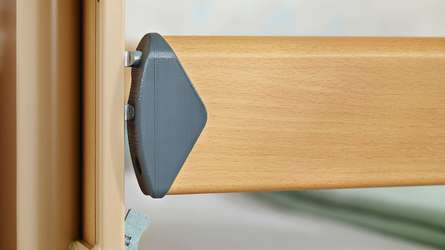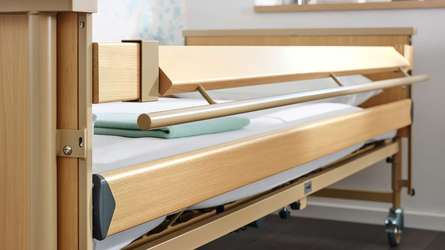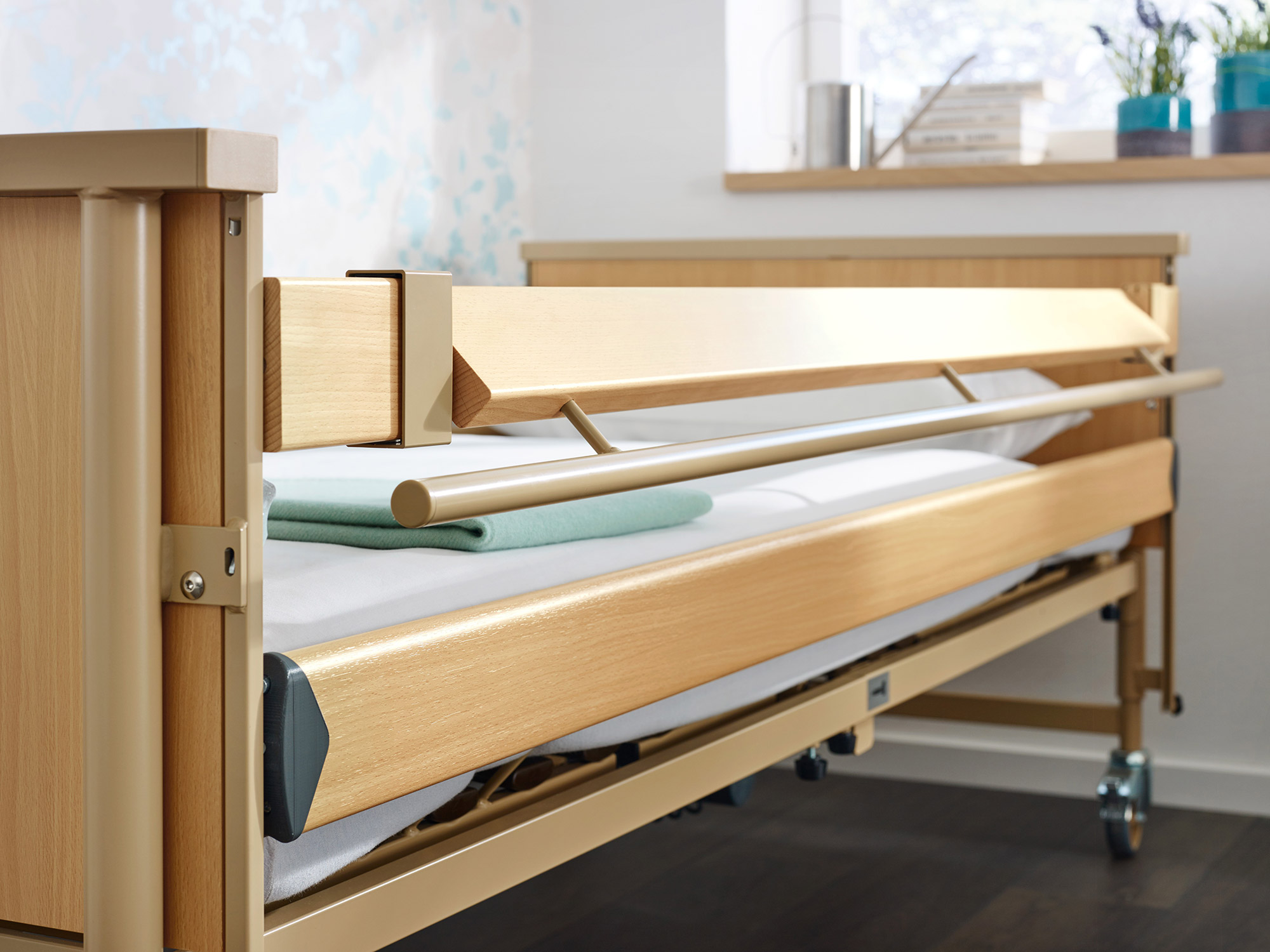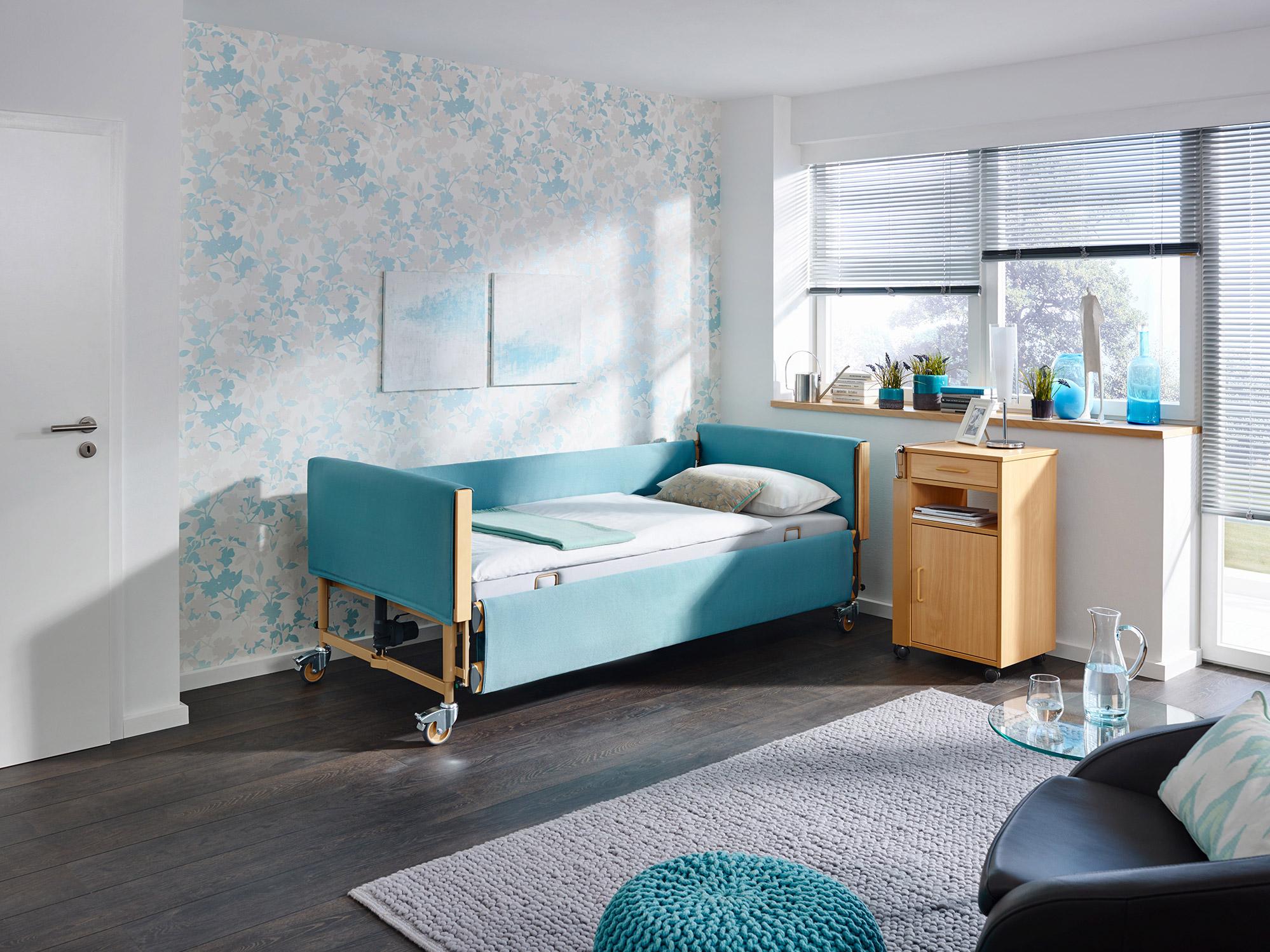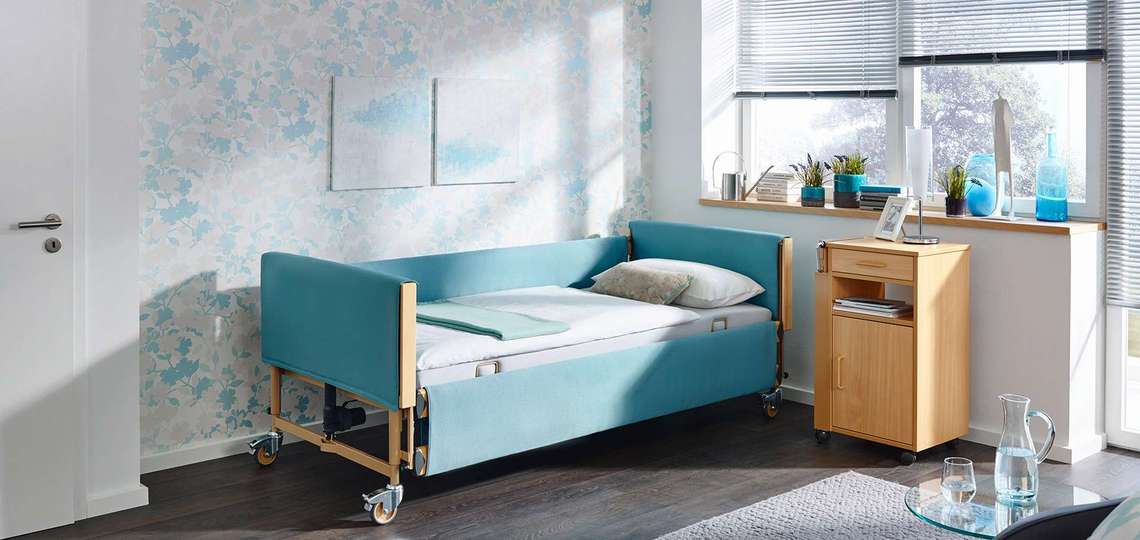
High in demand... Dali's the word!
Frank Himmelskötter in an interview with Manuel Jennen on the improved Dali II 24 Volt by Burmeier
Electrically adjustable care beds are a great achievement: They provide residents with much greater comfort, and facilitate the work of care staff considerably. We recommend the original Burmeier 24 volt drive system to users who place exacting demands on safety and economy. Product Manager Frank Himmelskötter explains the advantages of this system, and presents a bed which uses it to perfect advantage: the completely modernised Dali II 24 Volt.
Please describe the 24 volt system briefly!
In this drive system, the 230 volt power supply is converted into a low voltage of 24 volts directly at the socket by a transformer. This eliminates the 230 volts completely from the bed.
What are the strengths of this system?
It increases the safety of people in need of care. If the connecting cable between the power supply and the wiring harness is damaged, the 24 volt system poses no hazard. At this low voltage, only a tingling sensation at most would be felt. As long as there is no pulse from the handset, the bed is completely currentless. This also helps to save electricity costs.
Burmeier emphasises that the 24 volt system makes further leakage current measurements during the service life of the bed unnecessary. What does this mean?
The good working order of care beds must be tested at least every 2 years as repeat inspections. It is also checked whether any current is flowing accidentally through the metal parts to the ground – the so-called leakage current. If this value was too high, there would be a danger to the residents. With the 24 volt system, it is not necessary to measure this every 2 years. The interval is extended to such a degree that it extends far beyond the service life of 8 years specified in the operating instructions for our beds. This has been confirmed by the Technical Inspection Authority [TÜV] Rhineland.
What are the benefits?
This helps our customers, the health care retailers, to save money. Electrical training is no longer a condition for inspecting care beds. The expensive and sensitive testing equipment does not need to be constantly at hand. The tester requires only knowledge of the product, which can be easily conveyed.
Was Burmeier the first to introduce the 24 Volt system?
Yes, we first implemented it in a care bed nearly 11 years ago. The technology was not yet as developed as it is today; the transformer was not positioned directly in the socket, but lay on the ground – but we already had the idea of what the system should look like.
How do you see the future technical development of the 24 Volt system?
The trend leans towards intelligent bus systems, such as our Out-Of-Bed system, equipped with sensors which can process information from the outside – such as the weight on the backrest. Requirements will become more stringent, but we will face up to these increasing demands.
We are already doing this in a classic Burmeier product: the Dali II 24 Volt. Germany’s best-selling care bed has been extensively modernised for the REHACARE trade fair. What has been improved?
We have changed a few things to make Dali even more attractive. For example, the safety sides: the bars will soon be equipped with anthracite-coloured plastic cover caps. This looks good, and protects the bars from damage.
Are there any new features to enhance the functionality of the safety sides?
Yes, it is now possible to extend them in height if necessary. The upper bar is optionally equipped with an additional hand rail. It can hang downwards when it is not needed. If the protective height needs to be increased, the bar can be swivelled, and the hand rail provides additional safety. It is also a practical handle bar which helps the occupant to sit up in bed.
What features are there to facilitate the work of care bed operators?
It is easier to maintain the motors. They will soon be attached to the bed frame with pipe clip pins: bolts with hinged clamps, which are easy to open to remove the motor. Another improvement concerns the transport and storage aids. Previously, once the bed was set up, it was not clear where to store them, and they often disappeared. Now you can order a mounting fixture as an accessory to store the transport aids under the bed.
Is Dali II also more attractive?
Yes! We have just tested our new softcovers at REHACARE. These are fabric covers in 6 attractive colours for the headboard and footboard. You can also cover the safety sides to match. This makes it possible to tastefully adapt Dali II to any interior. The softcovers can be washed in the washing machine at 60°C. They are reinforced at the sides of the bed with decorative wooden panels. This looks very stylish!
For more information on Burmeier products, see www.burmeier.com.

Frank Himmelskötter is 50 years old, has 2 children, and has been working at Burmeier for 13 years as product manager, quality manager, and safety officer. He previously completed an apprenticeship, and later mechanical engineering studies in the field of industrial mixing facilities at 2 industrial Enterprises.

